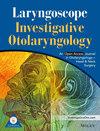Neuromuscular junction visualization in paraffin-embedded thyroarytenoid muscle sections: Expanding options beyond frozen section analysis
Abstract
Objective(s)
The current gold standard for immunofluorescent (IF) visualization of neuromuscular junctions (NMJs) in muscle utilizes frozen tissue sections with fluorescent conjugated antibodies to demarcate neurons and IF alpha-bungarotoxin (α-BTX) to demarcate motor endplates. Frozen tissue sectioning comes with inherent inescapable limitations, including cryosectioning artifact and limited sample shelf-life. However, a parallel approach to identify NMJs in paraffin-embedded tissue sections has not been previously described.
Methods
Yucatan minipig thyroarytenoid (TA) muscle was harvested and prepared as 5-μm thick paraffin-embedded tissue sections. A variety of antibodies at various concentrations were selected to target nicotinic acetylcholine receptors, synaptic vesicles, and neurons.
Results
Neurofilament (NEFL, Invitrogen, 1:500) and synaptic vesicle glycoprotein (SV2, DSHB, 1:230) bound and demarcated the neurons and synaptic vesicles, respectively. Following consistent visualization of nerve tissue, rabbit anti-nicotinic acetylcholine receptor alpha-1 subunit (CHRNα1, Abcam, 1:500) was used to identify the acetylcholine receptors within motor endplates. Complete NMJ visualization was then achieved with an optimized protocol using primary antibodies to the neurofilament light chain, nerve synaptic vesicle glycoprotein 2, and the alpha 1 subunit of the nicotinic acetylcholine receptor. Slide imaging was performed with the Echo Revolve Microscope (40×).
Conclusions
Herein, we describe a new methodology to visualize NMJs within paraffin-embedded TA muscle sections. Our protocol avoids the known limitations associated with cryosectioned samples and introduces a new neurolaryngologic research tool that utilizes the advantageous ability of paraffin-embedded sectioning to preserve tissue morphology. In conjunction with standard cryosectioned methods, the described paraffin-embedded protocol serves to enhance histological analysis of NMJs.
Level of evidence
NA.


 求助内容:
求助内容: 应助结果提醒方式:
应助结果提醒方式:


